Day 2: Pyramids tour and Egyptian history museum visit
Next morning, Moustafa, my guide for the day picked me up from the hotel and we drove to the Giza Pyramid complex. The tickets had already been arranged by the tour. The Pyramids are an impressive and awe-inspiring sight. It was a humbling and inspiring experience standing at the base of the great Pyramid. Humbling because standing next to this giant mountain of stone makes you feel tiny, and inspiring to think that humans were able to build these giant structures 5000 years ago! I could gush on about the pyramids, how they were built, what they mean and so on. But to keep things moving along, I refer you to chapter 5, Part 1 “Eternity Assured” in Toby Wilkinson’s book I mentioned earlier, for an excellent discourse about the pyramids. I’ll just present a few pictures and fun facts about the pyramids.
- The three Pyramids of Giza were once covered with a white polished limestone casing that would reflect the sun’s rays. However, over the years, these limestone casings have disappeared due to earthquakes or being used to build other structures. But, you can still see a bit of the original casing at the very top of the Pyramid of Khafre. Imagine the dazzling sight these giant structures would have presented with the white limestone gleaming against the sun!
- The three most prominent pyramids of Giza were built by kings of succeeding generations. The great pyramid by Khufu (2600 BC, 138 meters), the pyramid of Khafre by Khufu’s son Khafre (2570 BC, 136 meters), and the pyramid of Menkaure (by Khufu’s son Menkaure (2510 BC, 62 meters). The Khafre pyramid looks taller, but this is because it is located at a slightly higher elevation than the pyramid of Khufu. Its sides are also steeper by about 1 degree, which together with its lower height means the volume of the Khafre pyramid is smaller than the Khufu pyramid. This is a rare occasion in Egyptian history where the son didn’t try to outdo the father by building a monument bigger and more grandiose or vandalize older structures for building materials! Or perhaps they tried, but Egyptian society couldn’t sustain the immense effort required to build these massive structures, three times in a row.
- The pyramids of Giza were not the first or last pyramids built by the Egyptians. King Djoser of the third dynasty, built the Step Pyramid at Saqqara around 2560 BC, about 70 years before the great pyramid at Giza. The first king of the fourth dynasty, Pharoah Sneferu (father of Khufu), first tried building a true Pyramid at the necropolis of Dahshur, about 13 miles south of the Giza plateau (where the great Pyramid is located). However the builders choose too steep of an angle (54 degrees) and (it is thought) that the structure began to show signs of instability during construction, forcing the builders to adopt a shallower angle (43 degrees) to avert the structure’s collapse. Sneferu quickly ordered another pyramid to be built, and this second attempt resulted in the first successful large pyramid (105 meters tall), called the red Pyramid. So, when Sneferu’s son Khufu commenced construction of the great pyramid, Egyptian construction engineers had learnt from their earlier mistakes and mastered the art of Pyramid building. The 5th Dynasty pharaohs changed the location of their pyramids from Giza first to Saqqara (~14 miles from Giza) and then to Abusir and built significantly smaller pyramids than their predecessors. So, if you have some extra time in Cairo and want to see some of the lesser known pyramids, a visit to Saqqara is well worth it!
- The great pyramids were not built by aliens, but by a lot of people doing back breaking work for many years. Discoveries made near the pyramids show that a permanent workforce of about 20,000-40,000 people helped build the Pyramids of Giza. This included engineers, architects, builders, stonemasons, laborers, and more. Most of them lived nearby and worked hard to build the pyramid for daily wages and food. Over 2.3 million blocks of stone (mostly limestone and granite) were used in the construction of the Great Pyramid of Khufu. The stones ranged in weight from 1 to 8 tonnes and and were either quarried at Giza or transported by boat from far away sites like Tura and Aswan. I saw some of these stone quarries along the Nile later on the trip. While today’s Nile flows miles away from the Pyramid complex, according to this NYT article, a lost arm of the Nile once cut through this stretch of desert, and would have greatly simplified transporting the giant slabs of stone to the pyramid complex. Egyptian engineers built wooden tracks lubricated by water to transport the stone from the river to the pyramids, and built ramps out of mud brick and soil to haul the stones up. Later in the trip, we saw the remains of one of these ramps near the incomplete outer wall of the Karnak temple
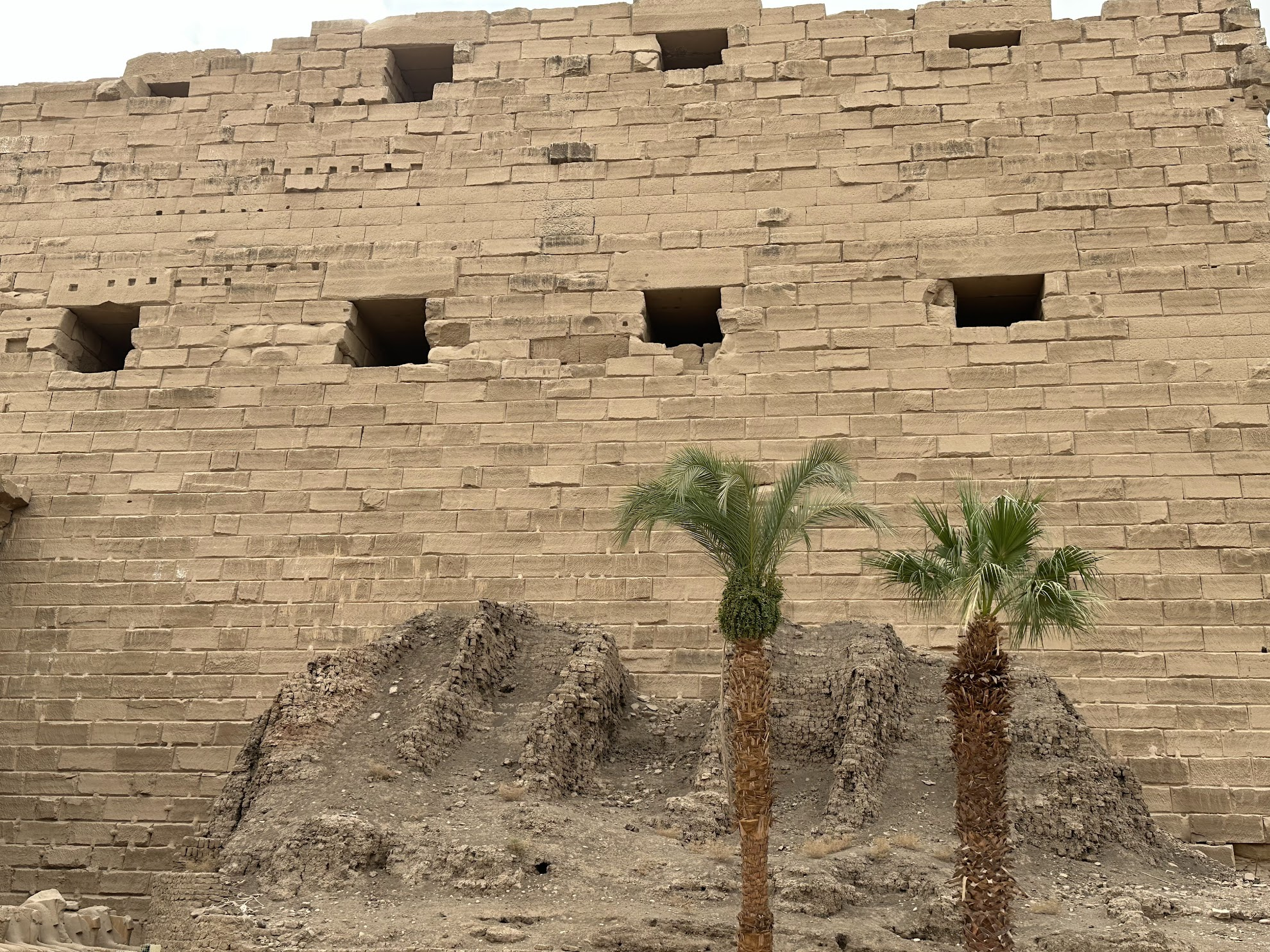
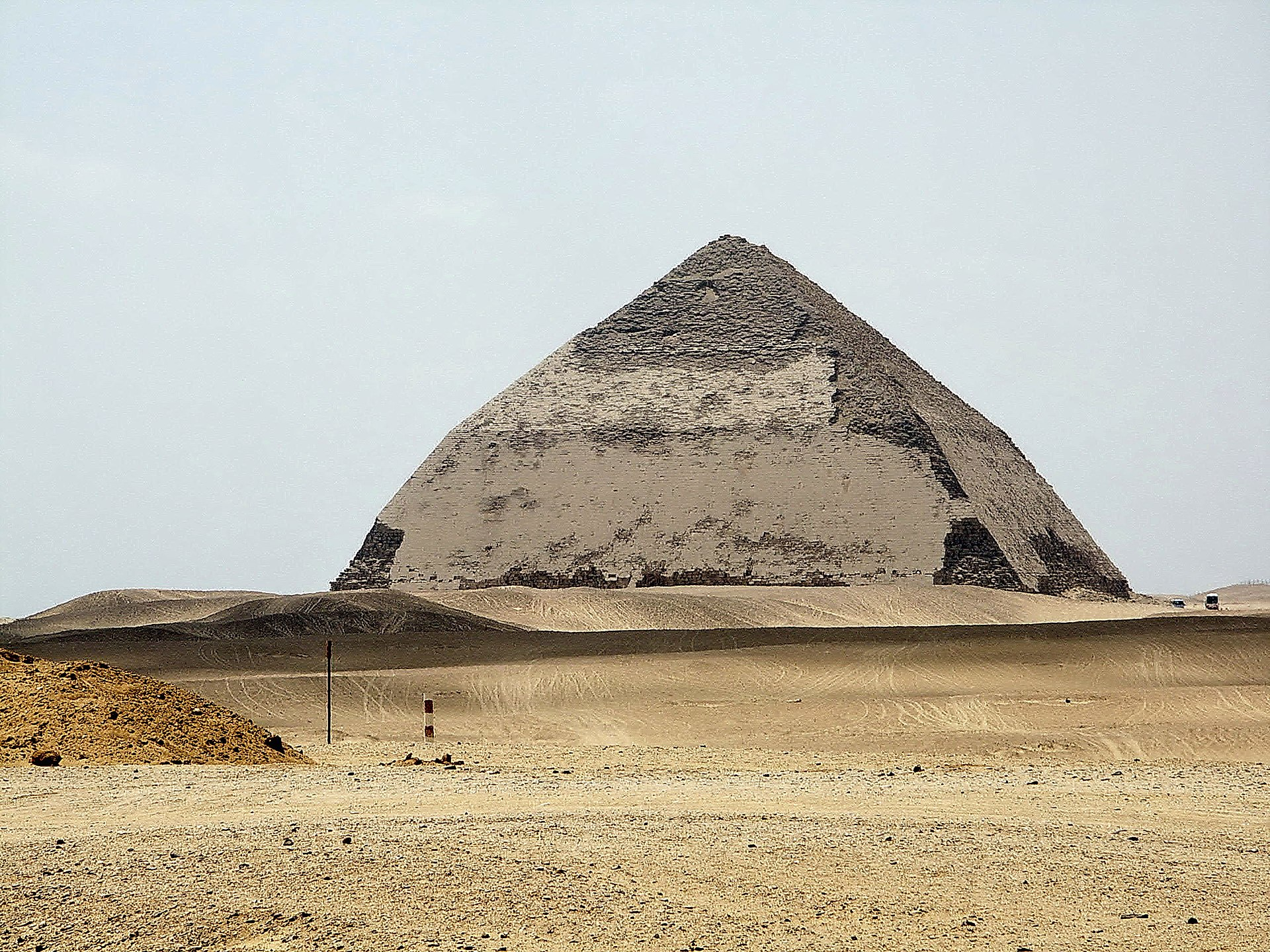
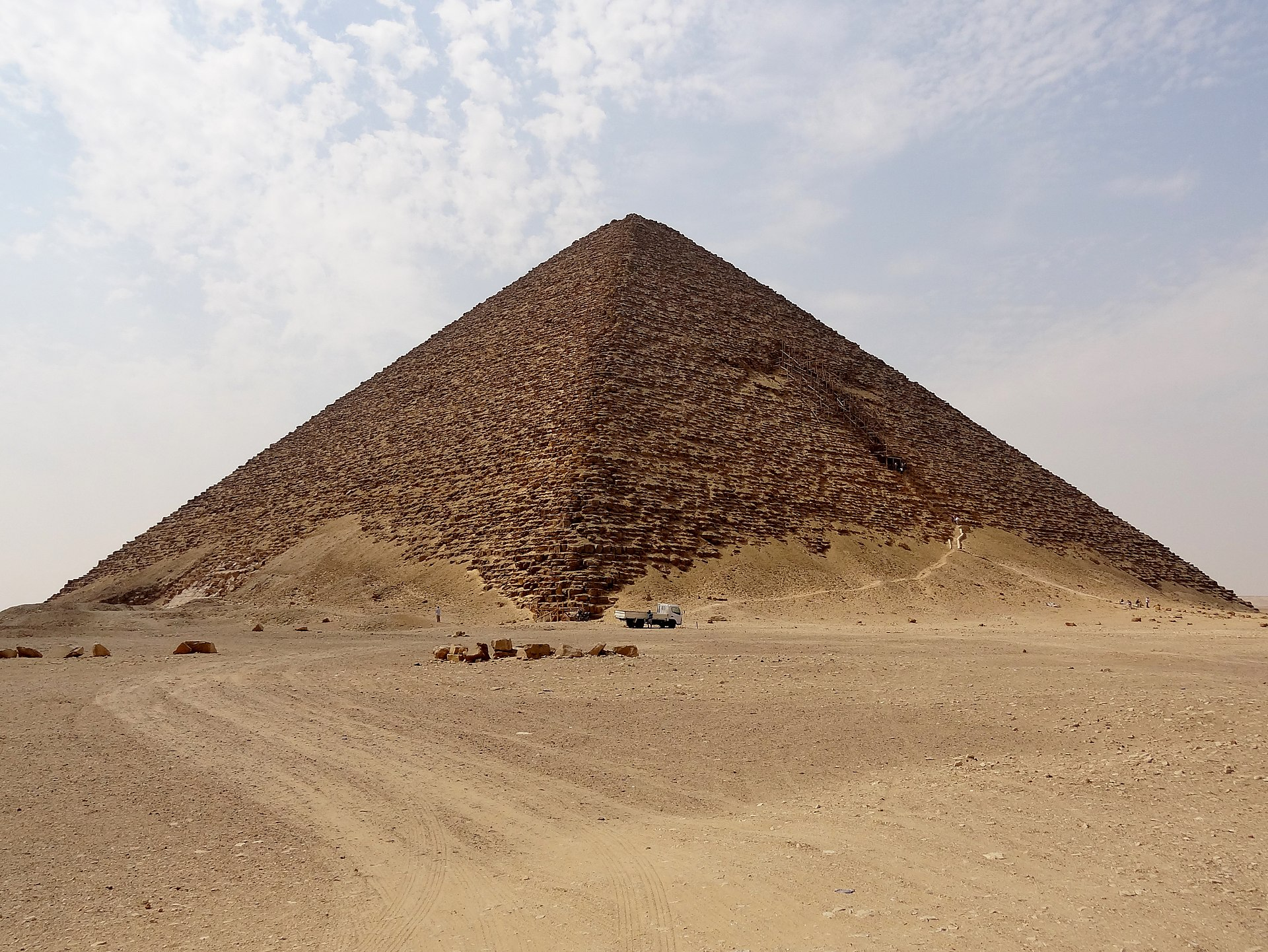
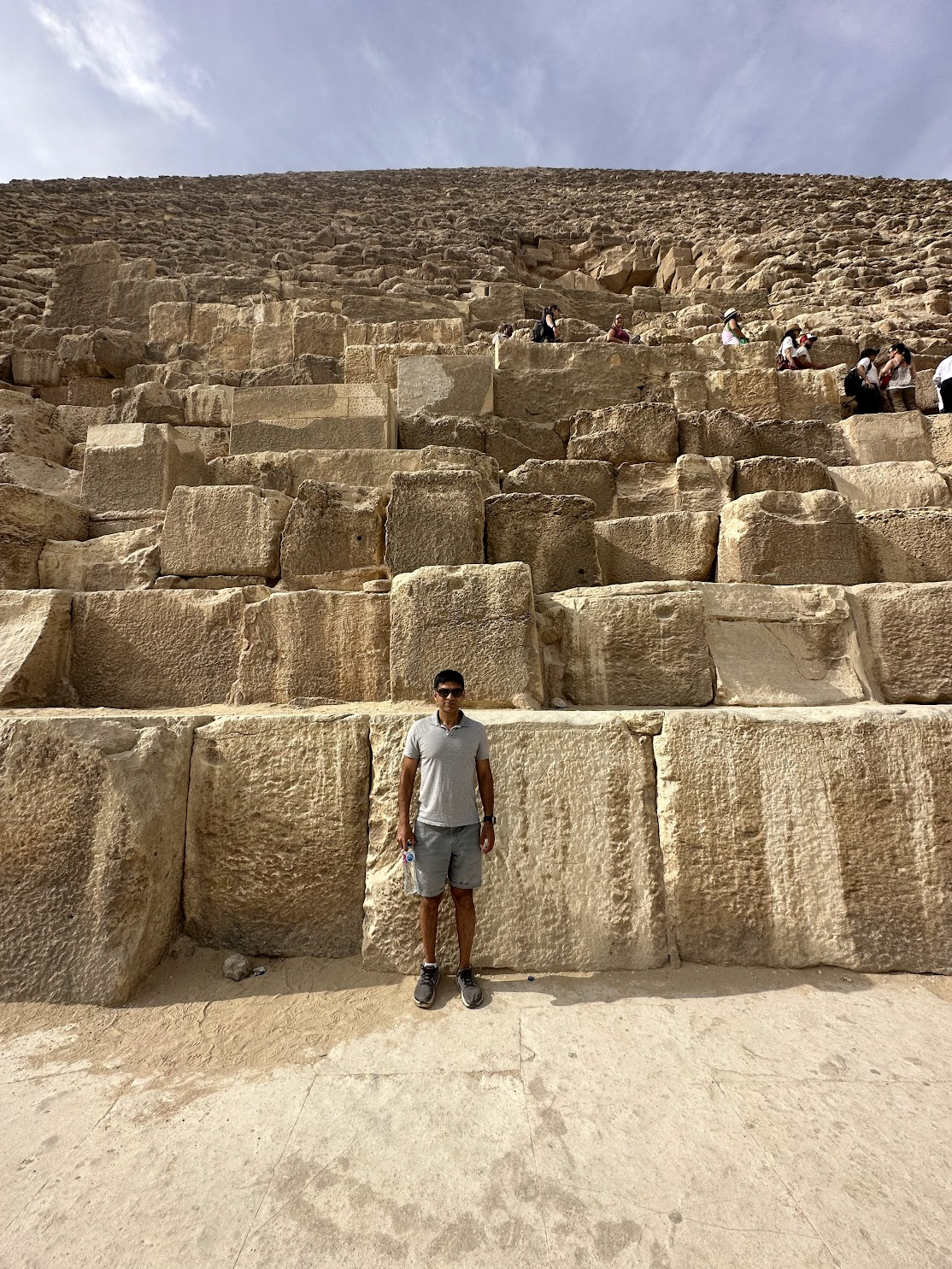
What were the pyramids built for and why did the later pharaohs stopped building pyramids? The answer is quite surprising. The Pyramids of Giza, like the Egyptian pyramids that came before and after them, were royal tombs, a final resting place for their pharaohs. They were often part of an extensive funerary complex that included queen’s burial sites and mortuary temples (designed to commemorate the reign of the pharaoh under whom they were constructed, as well as for use by the king’s cult after death for daily offerings). The pharaoh’s final resting place was usually within a burial chamber underneath the pyramid.
There is no compelling evidence that slave labor was used to build the pyramids. Most of the workers were probably unskilled agricultural workers employed on a seasonal basis during the regular flooding of the Nile, when there wasn’t much for them to do. Soldiers in the Egyptian army could have been drafted as well, to give them some work to do when there wasn’t an ongoing military campaign.
Because the Egyptians believed in life after death, the pharaoh’s body was carefully mummified and buried with all the objects he would need in the afterlife. This included gilded coffins, amulets of precious stones, exotic imported artifacts and lots of other stuff made of gold and precious stones. As such, the pyramids presented perfect targets for robbers looking for a quick gain. Egyptian architects were aware of the problem and designed traps, false chambers, and filled the chambers of the tomb with debris to prevent theft. They inscribed curses on the doors and lintels of tombs to put the fear of god in the minds of thieves, however these efforts were of no avail. All the pyramids were thoroughly looted of their contents (including the mummies) within a few hundred years of being built. Pharaohs of the new kingdom stopped building pyramids altogether, and started building subterranean burial chambers (which would be a less obvious target for robbers than a big mountain of stone), carved into rock in a new royal necropolis (now called Valley of the Kings). This necropolis was located in a relatively inaccessible place in the desert near Thebes (modern day Luxor). Amenhotep I (1541-1520 BCE) even commissioned a special village to be constructed near Thebes where the workers who worked on the tombs in the necropolis would live and work. The idea was that since they relied on the state for their wages and homes, they would be loyal and discreet regarding the location of the tombs and the amount of treasure to be found within. Did this work? We’ll find out a bit later!
It is possible to go inside Khufu’s pyramid to the King’s chamber where Khufu’s sarcophagus is located. The sarcophagus once housed Khufu’s mummy, but is now empty, thanks to tomb robbers who robbed the chamber of all its contents many centuries ago. There aren’t any hieroglyphs either, because the tradition of decorating the burial chambers with hieroglyphs hadn’t started in the 4th dynasty. The most impressive part of the King’s chamber are the massive blocks of granite that form its walls and ceilings. Some of these weigh up to 80 tonnes! The passage leading up to the King’s Chamber is long and narrow, and parts of it are too low for a normal height person to stand, so you have to walk up the slope in a single file in a hunched position, to get to the chamber. Closer to the burial chamber, the passage opens up and it becomes possible to walk upright. It is a somewhat uncomfortable but quite memorable experience.
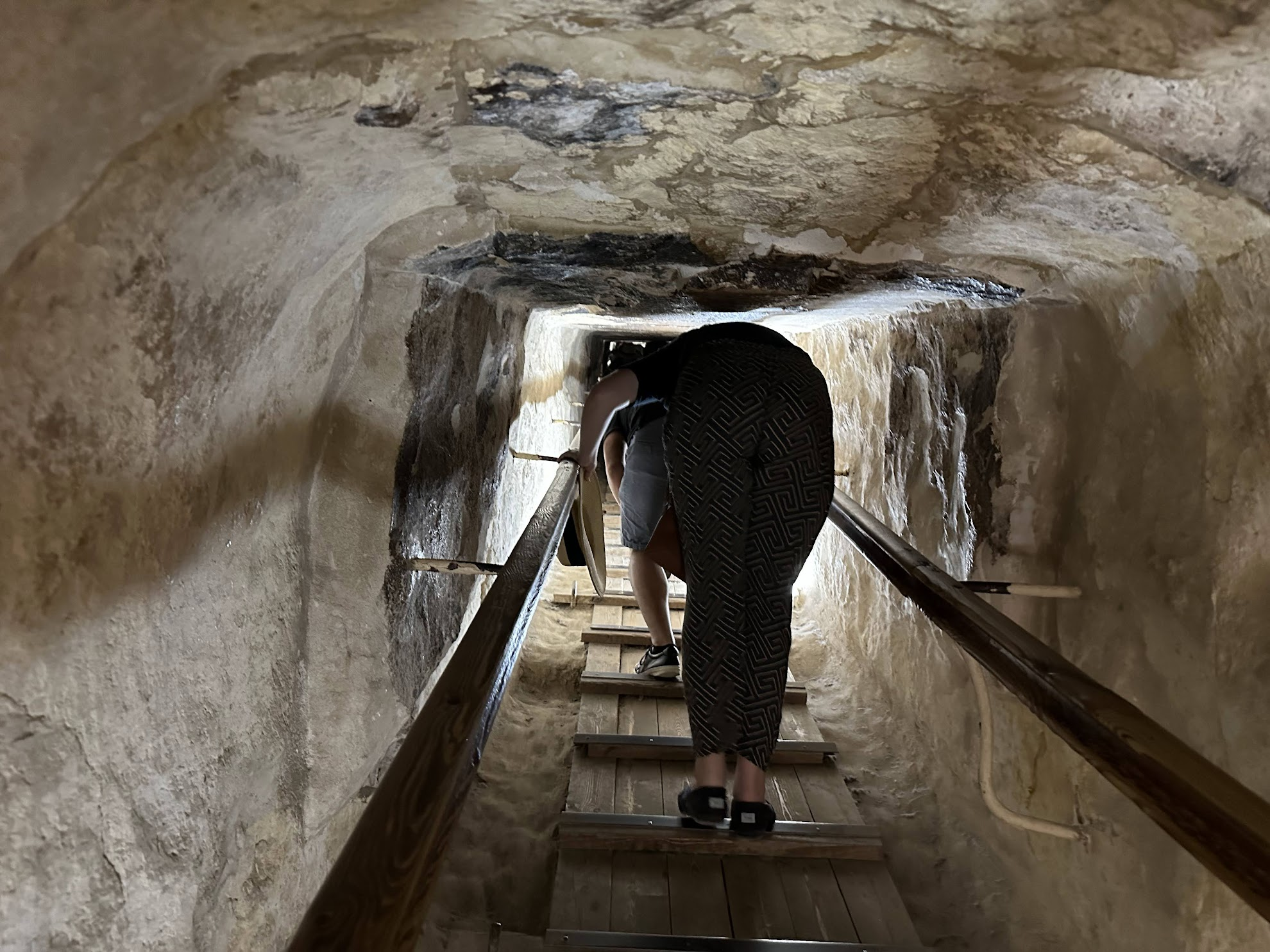
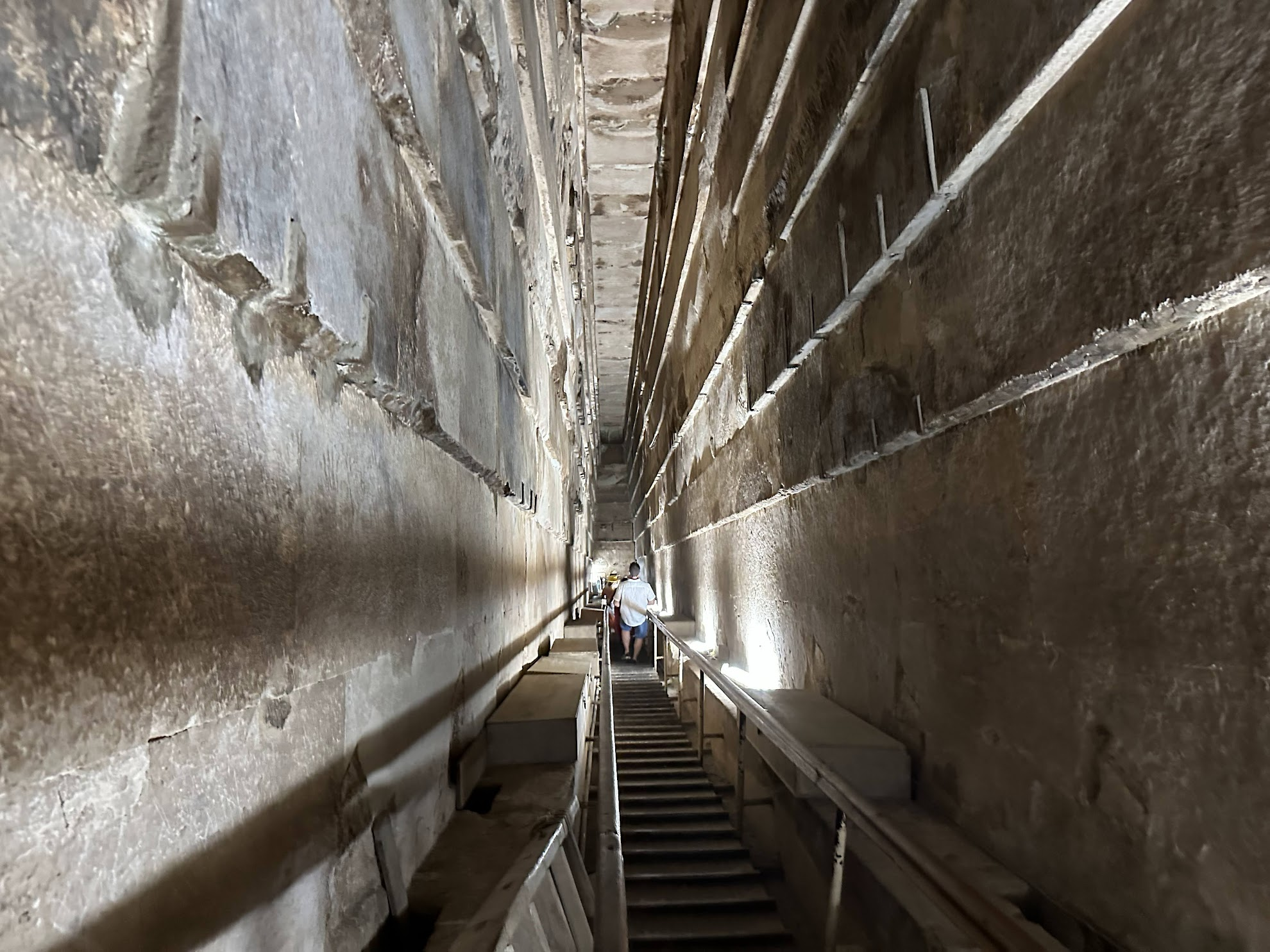
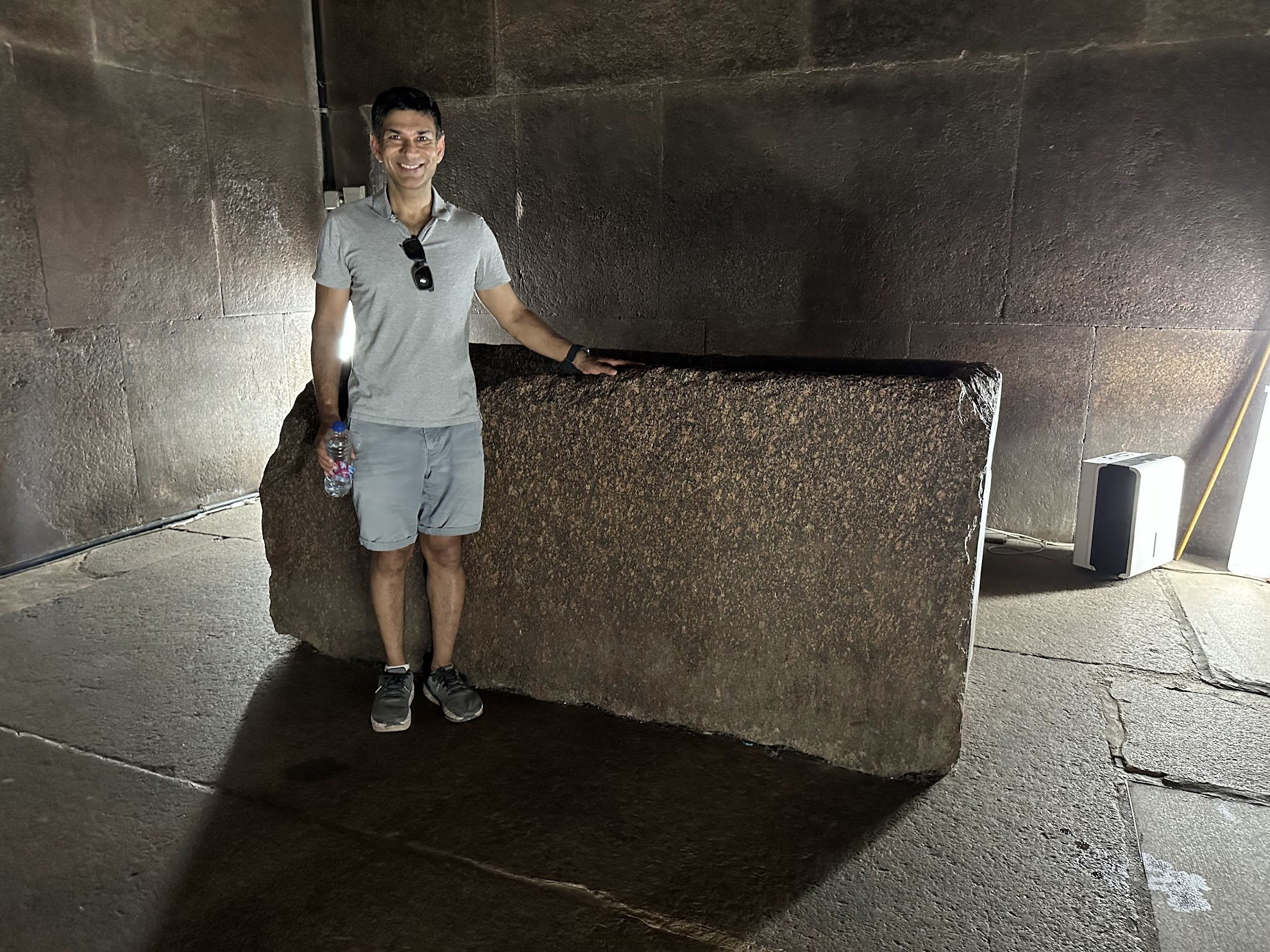
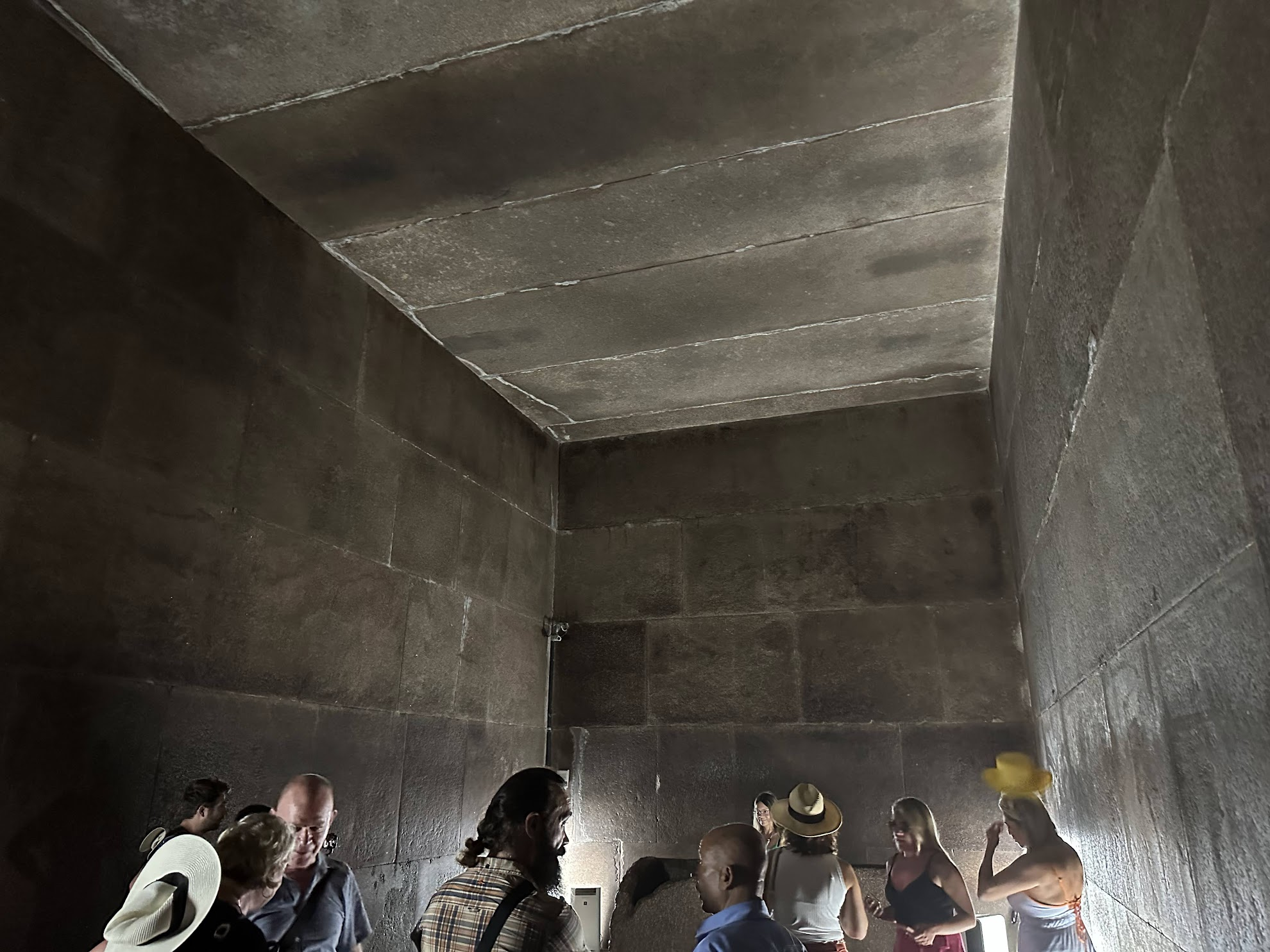
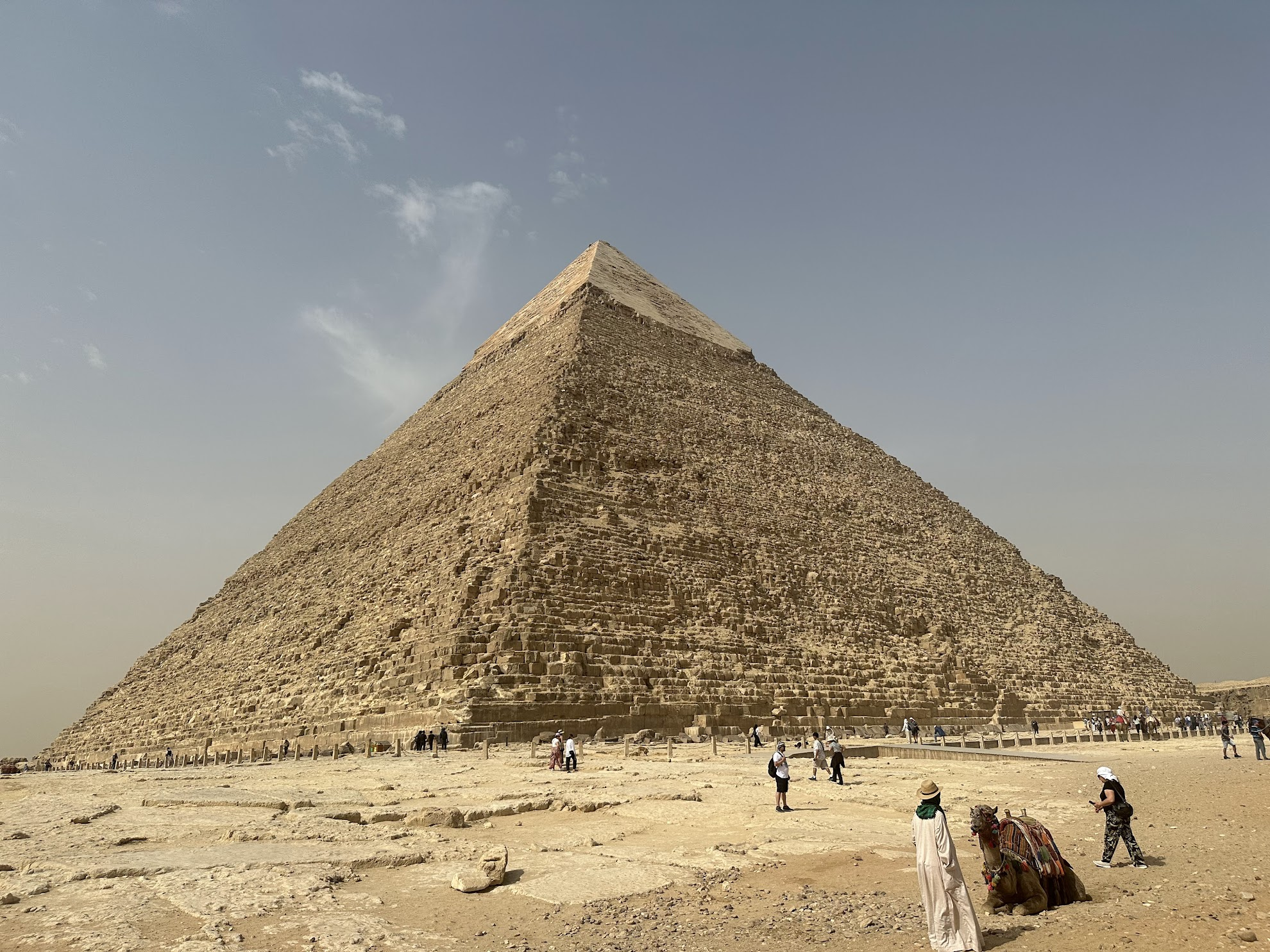
I did a camel ride after the pyramid tour. It was my first time riding a camel, and I found it to be a bumpy and rather uncomfortable ride. Before motor cars and other modern transportation systems, camels were the vehicle of choice to traverse desert landscapes. Riding camels for many hours a day must have been an uncomfortable experience!
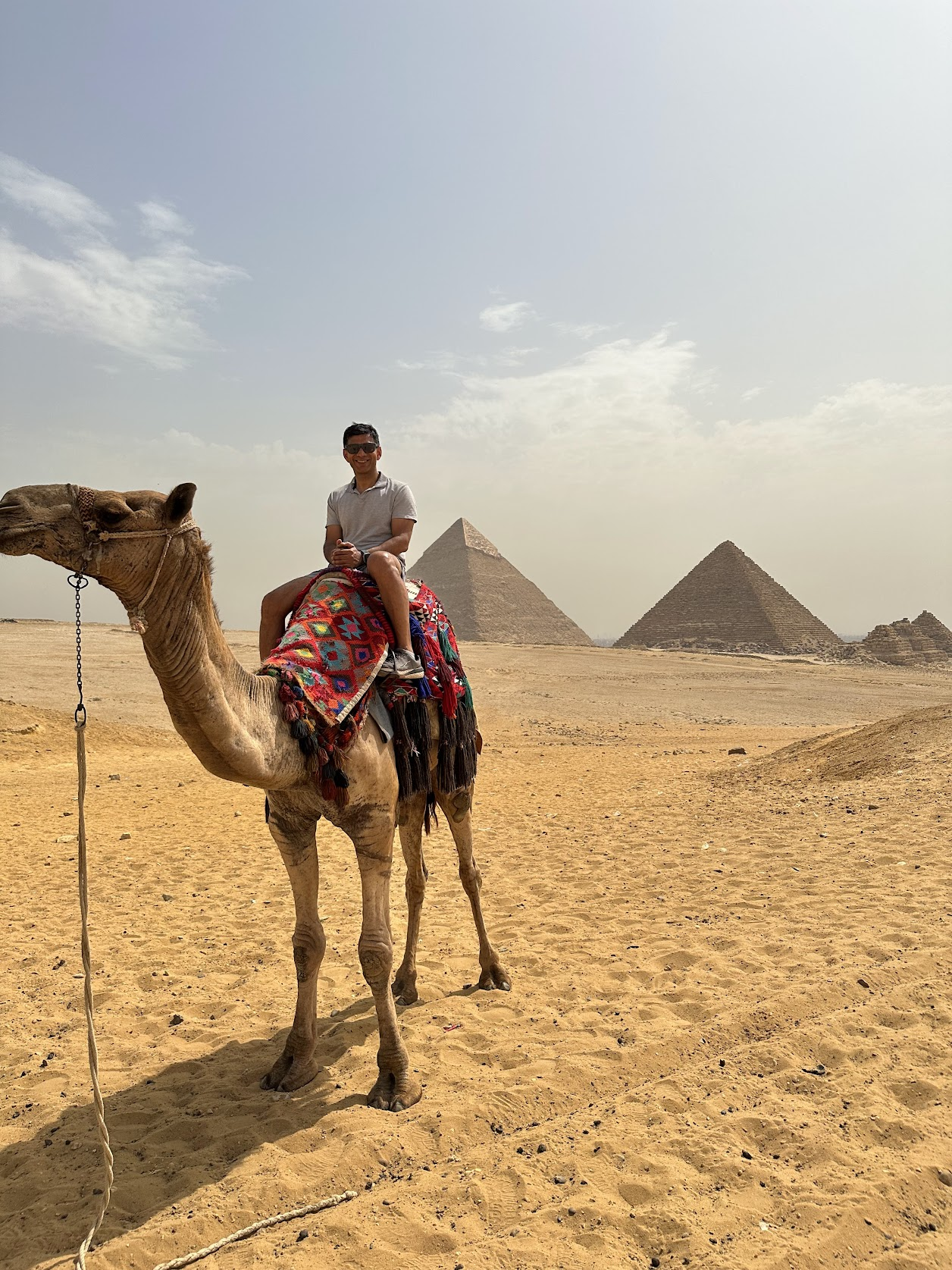

After the camel ride, we did a brief stop at the great Sphinx, which is more impressive in reality than it looks in pictures. Egyptologists disagree about when the sphinx was built and for what purpose. Evidence suggests it was built during the reign of Khafre. Some time around the First Intermediate Period (see timeline of Egyptian history on the main page of this blog), the Giza Necropolis was abandoned, and drifting sand eventually buried the Sphinx up to its shoulders. Around 1400 BC, Thutmose the 4th managed to dig out the front paws, between which he erected an inscribed granite slab, which is still visible today. Sand was cleared again in the Roman period, by which time, Egyptian monuments were already regarded as antiquities!

After the Pyramid tour, the guide took me to a papyrus shop. I got a demo of how papyrus was made from papyrus plant that grew abundantly in the marshes of the Nile . The paper that we use today originates from the ancient Egyptian art of making paper from papyrus. The shop sold art painted on papyrus which was quite beautiful. Some of the paintings have two layers and the bottom layer glows in the dark, revealing a different shape from what appears in light. A scribe can write a name or short message on the margins of the painting in hieroglyphs. The paintings are easy to carry and make excellent gift items. I bought a handful and have one displayed in my living room!
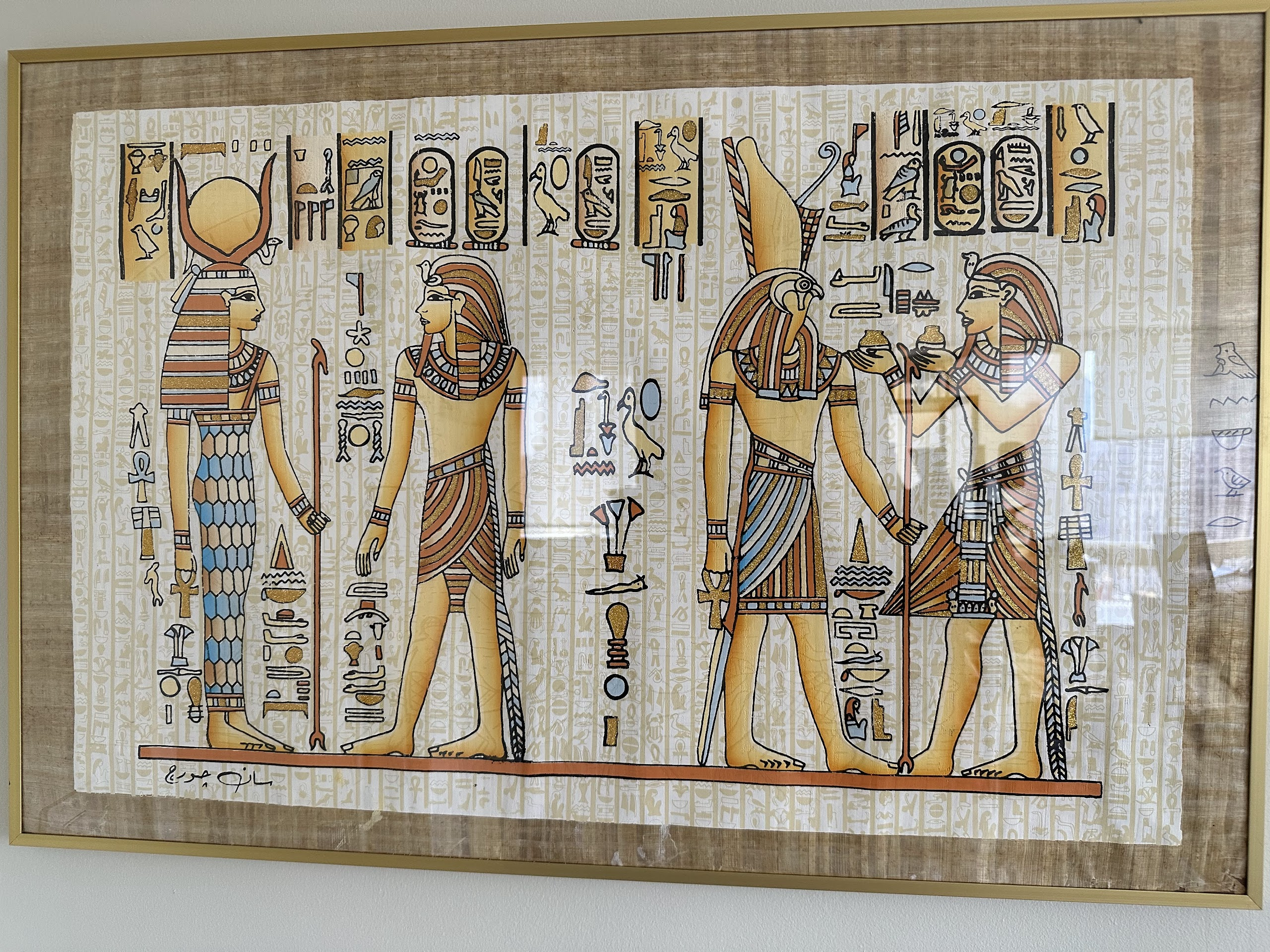
After the papyrus shop, we visited the Egyptian museum, the oldest archaeological museum in the Middle East. The museum displays an extensive collection spanning from the predynastic period to the Greco-Roman era. It is like the Met of Egyptian history, and someone even casually interested in Egyptian history can spend hours at this museum. The museum has a special section on the artifacts found in king Tut’s tomb, the only tomb to have been found intact. The quality of the craftsmanship is incredible.
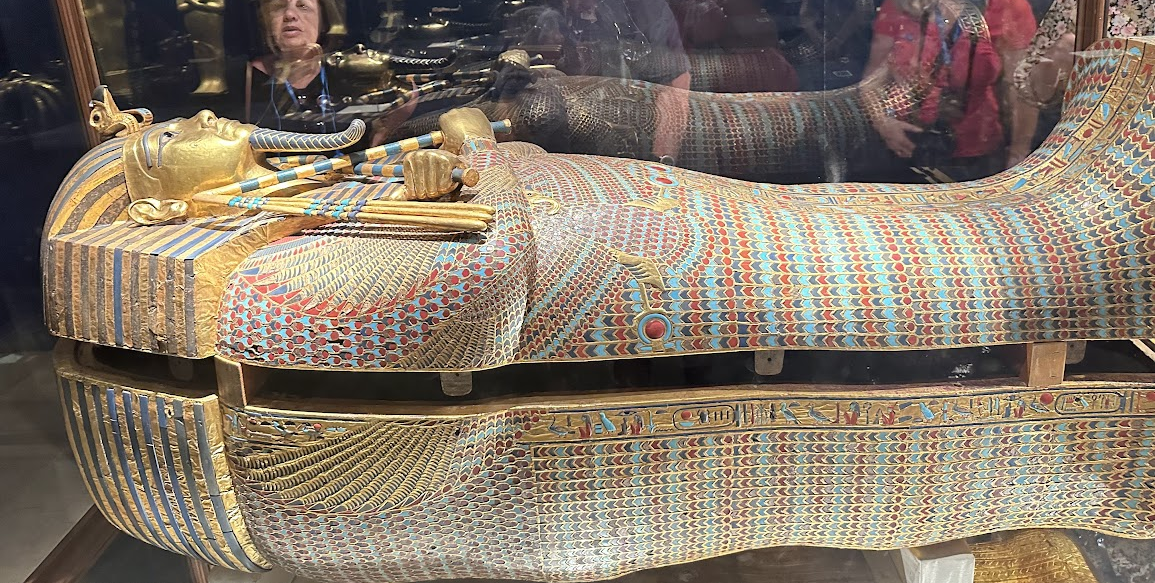
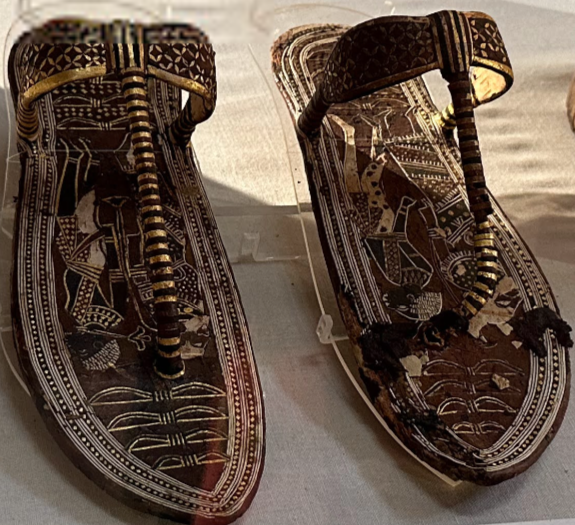


We finished the Egyptian museum tour around 3 PM and this was the last stop on my itinerary for the day. I asked my guide if there were other activities I could do to fill up the rest of the day. He recommended visiting the National Museum of Egyptian Culture (NMEC) most famous for the Mummies Hall. The hall includes 20 royal mummies, 18 kings and 2 queens from the 17th until the 20th dynasties, including the mummies of Hatshepsut and Thutmoses III. Because of the constraints imposed by the tour agency, my guide couldn’t accompany me on the museum tour. He asked our taxi driver to drop me off at the museum and we parted ways. I loved the NMEC visit. Looking at the mummified face of someone who died more than 3500 years ago is a really unique experience, and I highly recommend visiting this museum. There are several interesting exhibits from other periods of Egyptian history–such as Byzantine and Islamic periods as well
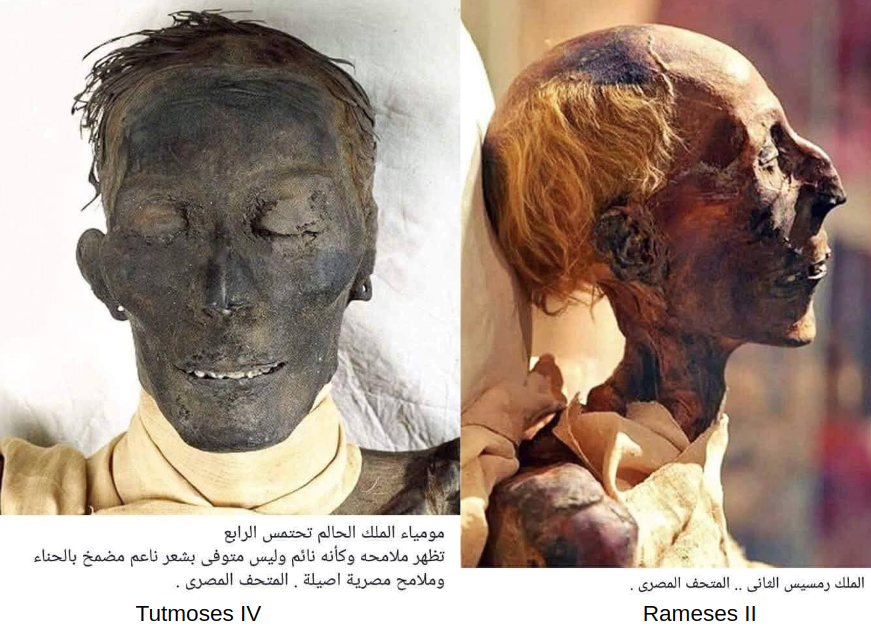
After the museum tour, I considered doing an evening dinner cruise on the Nile, but I was a bit tired and decided to take an Uber back to the hotel. Using Uber in Cairo was easy and super cheap. A 45 min uber ride from the museum to my hotel cost me ~$5!

Leave a Reply